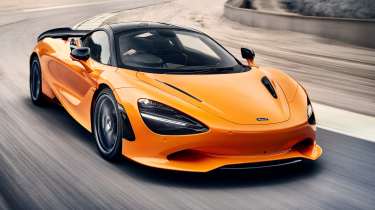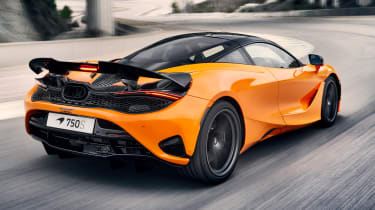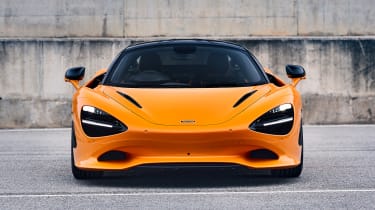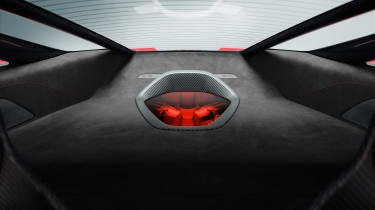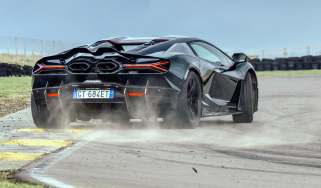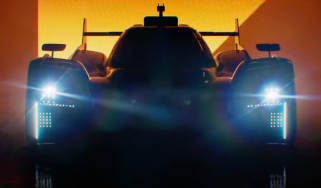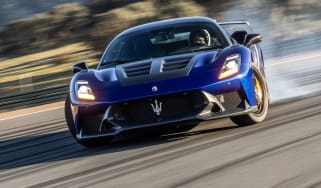2023 McLaren 750S revealed as new flagship supercar
With the 720S having met its end, McLaren has launched the 750S as its 2023 successor
Six years since the reveal of the 720S, McLaren Automotive has launched its replacement. Available in both coupe and Spider forms, the 750S arrives as the marque’s lightest and most powerful series production model yet, with a focus on weight saving and increased performance to outgun the Ferrari 296 GTB and Maserati MC20.
Developed over an 18 month period with direct input from McLaren’s new CEO Michael Leiters, the new model will be the final Super Series car before an all-new electrified offering launches in 2026. Designed as a comprehensive facelift as opposed to an all-new model, the 750S retains a familiar design, wrapped around the same Monocage II carbonfibre monocoque as its predecessor. Borrowing parts from the 765LT, McLaren says 30 per cent of its components are new or modified.
> Ferrari 296 GTB 2023 review – fewer cylinders, greater thrills
At its core is the same M840T 4-litre twin-turbocharged V8 as the previous car, now producing 740bhp and 590lb ft of torque with a 8500rpm redline – power is up 30bhp and 22lb ft over the 720S, making its output higher than the P1’s combustion engine. These new figures come courtesy of an increase in boost pressure, lightened pistons from the 765LT, a high-flow fuel pump, a redesigned triple layer head gasket and an ECU tune to pull it all together. The power plant also sits on bespoke engine mounts designed to provide more sound and feedback to the driver when it matters.
Also new to the 750S are the shortened gear ratios from the 765LT, making acceleration even more potent than before. The 0-62mph sprint comes in the same 2.8sec, but 0-124mph now happens in 7.2sec, a whole six tenths sooner than in the 720S. Given the shorter ratios, top speed has been knocked down from 212mph to 206mph.
Despite improved tech and performance, the 750S is 30kg lighter than its predecessor. Overall weight stands at 1389kg and 1438kg (DIN) for the coupe and Spider respectively in their lightest configurations, making them considerably lighter than most key rivals – as a result, power-to-weight stands at an impressive 533bhp/ton for the coupe.
To achieve this, the 750S comes with 10-spoke 19 and 20-inch lightweight forged wheels as standard to save 13.8kg, with optional carbonfibre racing seats saving another 17.5kg over standard 720S units. The new P1-inspired centre-exit stainless steel exhaust system is 2.2kg lighter than before too, with a new windscreen saving 1.6kg.
The third iteration of McLaren’s Proactive Chassis Control linked-hydraulic suspension makes its debut on the 750S, with its lightweight springs (saving 2kg) 3 per cent softer at the front and 4 per cent stiffer at the rear. Dampers are also revised, with new geometry settings designed to improve overall response and stability. The electro-hydraulic steering we’ve come to love is retained, now sharpened with a faster ratio, a new power-assistance pump and revisions to help mitigate bump steer. There’s also a 6mm increase in front track width to further sharpen dynamics.
As standard, the 750S is equipped with 390mm front, 380mm rear carbon ceramic discs with 6 and 4-piston calipers, however buyers can opt for a brake upgrade to equip the high tech discs and monobloc calipers from the Senna, complete with a new booster and vacuum pump. Pirelli P Zero tyres come as standard, with sticky P Zero Corsa, Trofeo R and titanium wheel bolts available as an option.
Th design is familiar, with the 720’s eye-socket headlights remaining. There are some subtle changes though, with an extended front splitter, a lower front bumper and narrower eye-socket intakes for improved gearbox and charge cooler airflow. At the rear there are new wheelarch vents, with the rear tyres more exposed than before to help reduce pressure within the arches. Most notable is the extended rear wing, borrowed from the 765LT for a 20 per cent increase in surface area and a 1.6kg reduction in weight – as in the Longtail, the active wing features a cutout to prevent heat damage and improve rearward visibility.
Inside it’s a similar story, with the same pared-back, driver-oriented cabin as before. This time though, McLaren has mounted a new, lightened instrument display (saving 1.8kg) directly to the steering column, with switches either side allowing the driver to alter driving modes without taking hands off the clutter-free wheel. Apple CarPlay and Android Auto are standard, as is a new free-programmable ‘McLaren Control Launcher’ button for easy access to bespoke driver settings. While it serves no performance function, there’s also a new optional double-glazed engine bay window that provides a view of that V8 through a panel in the rear luggage shelf.
The McLaren 750S is available to order now. Pricing is yet to be confirmed, but expect a 10 per cent uplift over the 720S coupe’s £222,885 and Spider’s £239,230 respective price tags.
McLaren 750S specs
| Engine | V8, twin-turbocharged, 4-litre |
| Power | 740bhp @ 7500rpm |
| Torque | 590lb ft @ 5500rpm |
| Weight | 1389kg (DIN) |
| Power-to-weight | 533bhp/ton |
| 0-62mph | 2.8sec |
| Top speed | 206mph (limited) |
